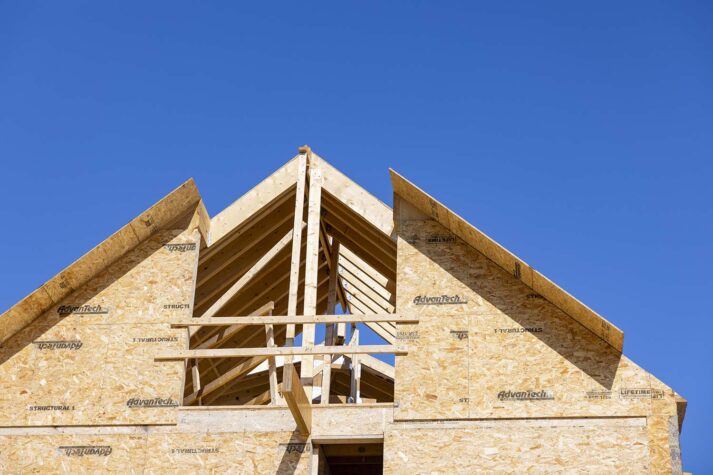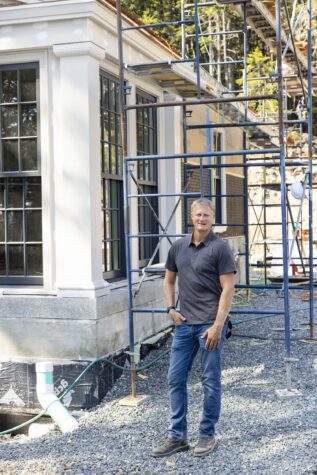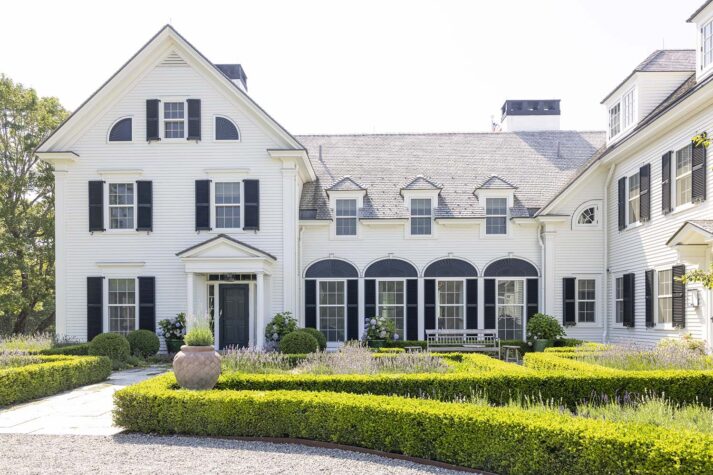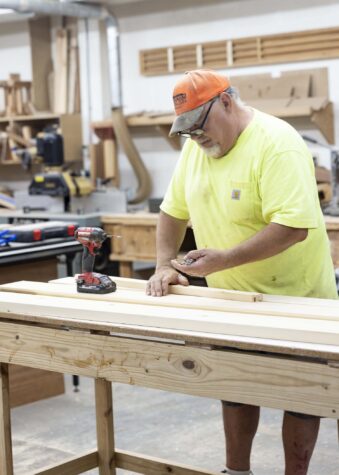The Craftsman & His Company: Nate Holyoke’s Passion for Woodcraft
How Nate Holyoke grew from a young carpenter into the founder of Maine’s largest residential building company.
I’m a fourth-generation builder,” says Nate Holyoke. “I always knew what I wanted to do.” After completing a vocational curriculum in carpentry during high school, he briefly worked as a subcontractor before starting his own company at the age of 20, leaning on his “family-generated knowledge and background.” Through good instincts, a deep commitment to craftsmanship, and “the school of hard knocks,” he’s grown Nate Holyoke Builders into a firm that employs 150 people and builds many of the state’s most luxurious residences.
Holyoke’s company got off the ground subcontracting for Cold Mountain Builders in Belfast. “There were six of us carpenters when we started,” he recalls. “We all had the desire to do the absolute best work. There was competition between the guys to do the highest quality.” Not all projects, though, can support the hours needed for peak craftsmanship, so Holyoke and his cohort gravitated toward the high-end residential market. “I’m wired to do complicated, highly crafted things. In order to work for an honest wage, I had to find people willing to pay for more time, so more love could go into the project.”
Through Cold Mountain, Holyoke was hired onto a project that would be a turning point in his career: a large lakeside property that started with an innovative yet camplike home, then evolved into a multistructure site where built and landscaped elements wove among woods, boulders, and shoreline. The project gave him a chance to flex his creative and technical muscles, and was his first collaboration with architect Will Winkelman and his then-firm, Whitten Architects (Winkelman started his own firm shortly afterward). Those relationships have lasted. “Over the last fifteen-plus years I’ve learned that Nate is an outstanding builder whose passion for his craft shines through in every project,” says Russ Tyson of Whitten Architects. “His humility, creativity, and unwavering dedication to craftsmanship are inspiring and help to elevate our projects. I deeply appreciate the respect he has for architecture and our design process.”
Holyoke launched Nate Holyoke Builders in 2004, and soon after joined Winkelman on a very large-scale property on Mount Desert Island. “That really started us into the high end,” he says. “Once you’re in it, if you work hard and treat clients fairly, the projects seem to be endless. And bigger.”
His company got bigger, too. From the beginning, Holyoke knew what kind of building he wanted to do. “Once you find your style, you pick what you’re good at,” he says. “I really like visual craftsmanship. I really like traditional. I respect and understand the modern side of things. A lot of work is hidden behind steel and glass, and that’s hard to pull off. But if you can look at a house and say, ‘That’s extremely crafted,’ that’s meaningful. We want you to be able to see it. The most important thing for us is the quality of the build. If we lose that, we lose everything.”
To maintain the company’s high level of craftsmanship, Holyoke stays hands on, making sure he is a presence on every jobsite. “Being on the sites helps a lot. The hardest thing I’ve found is to train someone else to have that eye. What’s the most important thing for me to do in this company? It’s not sitting in the Zoom call or the finance office, writing meeting notes or agendas. It’s going to the jobs to make sure they look the way they should. The houses are expensive, so they’ve got to look like it. You have to reinforce that, and believe in it, or you can lose that culture.”
For all the importance of Holyoke’s personal presence and influence, there is a lot of room for autonomy throughout the company. “It’s so far from a dictatorship. I’m so far from a micromanager,” he says. “We have some of the best people in the trade, with great talent and great attitude. People are going to want to learn from those types of people.” Longtime friend and collaborator Albert Putnam, who leads the structural engineering company Albert Putnam Associates, confirms this. “He motivates by showing what needs to be done, not how, and it spurs organic growth and creativity at all levels within his companies.” Holyoke says that his company’s growth was a byproduct of supporting his team. “We had a lot of good people who wanted to stay with the company, and wanted to work their way up. Once people get promoted into leadership, it’s hard to downscale. We invest hard in our people.”
As a result, Nate Holyoke Builders is highly vertically integrated, with specialists in all aspects of building, from millwork and panel fabrication to drywall and painting. A service division provides maintenance for every home the company has built, and a real estate division allows the company to provide rental housing for employees during multiyear projects. In 2018 Holyoke put together a deal that allowed him to acquire a century-old stone quarry that had laid unused for decades, the land divided among disagreeing branches of a family. Even Holyoke’s hobbies, flying and fishing, have been put to good use in the company. Several years ago he bought a floatplane with the idea of getting to fishing spots quickly, but “realized quickly it was more of a business tool.” Now the plane travels multiple times per week to move employees among sites, or occasionally to take a client to Holyoke’s fishing lodge in Labrador. (Holyoke is a Labrador Guide, and says fishing “is as much of a passion as building is.”)
For the future, Holyoke says, “We’re not looking at a lot of growth, but having good people means there will be some growth because everyone wants to excel and succeed. It’s inevitable, but it’s not the vision. We just want to have everybody enjoy what they’re doing.” As Holyoke sees it, at the heart of his company’s success is a shared passion for the craft of fine homebuilding. “When you’re in the big-house, mega-project world, it’s challenging. These projects, you love to see it come in, when you’re in it you struggle, and you miss it when it’s gone. It’s almost the same emotional feeling like it’s a kid or a family member. If you don’t have that type of feeling, you’re not going to be a good fit for our team. It’s hard to explain, but it’s a family.”





